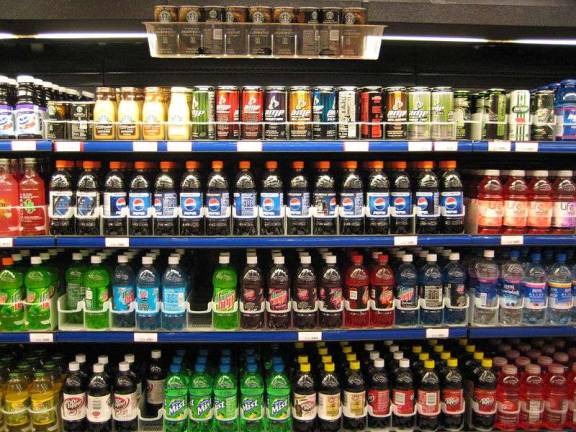Bloomberg and Bodegas: The Power Elites? Hollow arguments from opponents of ban on sodas

It's just like a bodega to try and rig the system the way a hedge fund or a Wall Street Bank would do. They're like the three amigos. Bodegas, you see, are some of the New York City businesses that will clean up at the expense of the "little guys," like pizza parlors and McDonald's, if, as expected, Mayor Michael Bloomberg's new soda policy goes into effect in September. That was just one of several hollow arguments opponents made at last week's Board of Health public hearing. The argument, advanced by Council Members Melissa Mark-Viverito and Letitia James, among others, is that because the limit to large sugary drinks applies to restaurants but not many bodegas, supermarkets and candy stores, it sets up an unfair advantage. Here's the apparent theory. You go into a shop for a pizza slice. You're desperate for more than 16 ounces of soda-not so desperate that you'll buy two or three sodas at the parlor, which would still be permissible, but just thirsty enough to take the slice into the bodega next door and wait on line again to buy a large amount of soda in one container. Or you are so determined to have a Big Gulp that you'll choose your meal based on the available drink size. Jimmy Alix, who works at an East Harlem candy store barely wide enough to squeeze in two-liter bottles of soda, is not expecting a rush of business from the pizza shop across the street or the other two a block away from his shop on Lexington Avenue and 124th Street. "I don't think so," he said. "People are going to buy whatever size they have there." At least three other nearby places would be permitted to sell large sodas: a small grocery, another candy store and a Pathmark. Large soda consumption would undoubtedly continue, but some people would clearly drink less and, perhaps as important, the debate has likely made many people more aware of how many empty calories they drink. Former Gov. David Paterson tried to talk truth to powerful bodegas and others a few years ago with a soda tax, but Big Sugar beat him. An industry ad back then showed a small grocery owner saying his customers calculate their food bills down to the penny. It was meant to trigger outrage that working-class people would pay more, but it really showed that the tax would lead to healthier choices. Another of the absurd arguments by lobbyists and opponents is that it limits free choice. Although not a goal of the Bloomberg plan, it would actually expand choice in places like movie theaters. The misnamed group leading the opposition backed in part by movie theater chains, New Yorkers for Beverage Choices, didn't have anything to say about their effort to keep limits on consumer choice. At least one opponent "expert" said there's no proof that people will take in fewer calories. It shouldn't take an Ivy League professor to point out the obvious-people tend to drink all that they are served-but it did.